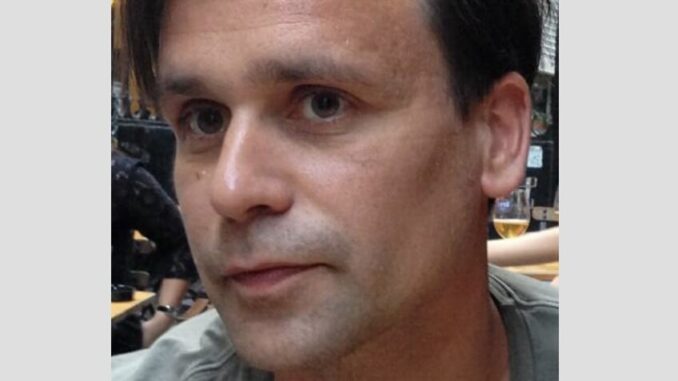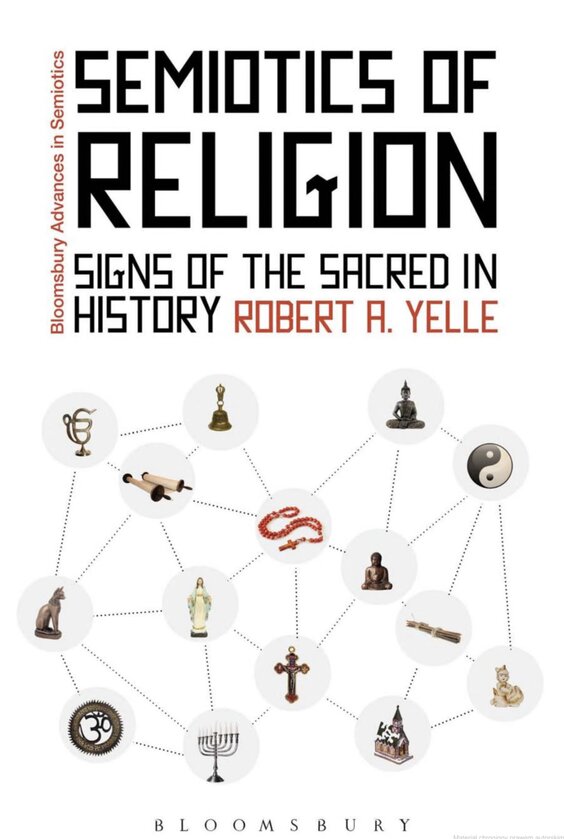
Robert Yelle, author of The Semiotics of Religion: Signs of the Sacred in History (Bloomsbury, 2012) reviews Devotion and Artifice: Themes of Suspension in the History of Religions, by Peter Jackson Rova (De Gruyter, 2023).
The Swedish historian of religions and Indo-Europeanist Peter Jackson Rova has produced a
sophisticated and sweeping survey of the category of religion from a novel perspective, that of the
capacity for sustaining fictions or suspending (dis)belief. The work is chronologically organized into
three parts, dealing respectively with ancient (or pre-Axial) themes (chapters 2-4), then the impact of
Greek philosophical and Christian developments (chapters 5-7), and finally extending to our
contemporary age (chapters 8-9). The archive addressed begins with the Neanderthals and
prehistorical remains, and consists mainly of the sources of European traditions, with some
occasional forays into Indological, Zoroastrian, and even Islamic data. The book is concise without
being overly dense, despite some chapters engaging in the sort of philological analysis characteristic
of scholarship on Indo-European traditions.
Jackson Rova understands the suspension of (dis)belief or judgment, meaning the creative
engagement with the fictive displays of ritual and myth, as central to the religious imagination: “They
(i.e., devotion and artifice) can be taken to label the complementary means by which humans
voluntarily step out of habitual patterns of judgment and disbelief in order to perceive and
appreciate the world differently” (13). He attempts to go beyond the rigid dichotomies of the
Platonic distinction between mythos and logos, understood respectively as false and true modes of
thinking, which underlies the still too common characterization of homo religiosus as credulous and
prone to both self-deception and the deception of others. For Jackson Rova, it is entirely natural and
human to engage in wonder (thauma) and artifice (mekhane), without thereby losing one’s critical
faculties. Although Hans Vaihinger is only very briefly addressed (at 14n10), there is a clear
resemblance to his Philosophie des Als Ob (1911), and the phrase ’as if’ also figures in Jackson Rova’s
description of the function of religion (e.g., at 166).

As a first approach to understanding Jackson Rova’s project, we may contrast this with the earlier
intellectualism of James George Frazer 1 , who famously organized human thought on an evolutionary
scale, and relegated magic as well as much of religion to older, discredited stages displaced by
modern science. Frazer’s concept of magic depended integrally on the concepts of illusion and
credulity. Jackson Rova’s understanding of religion, conversely, depends not on false belief, but
rather on the human propensity to suspend belief or judgment, without falling into rank credulity.
One model for this delicate balance is the literary imagination of Samuel Taylor Coleridge (2-5);
another is the ancient skeptical concept of epoche (2, 5). 2 Characteristic of this balance is the Roman
philosopher Cicero, whose doubts concerning divination did not disable him from participating as a
priest in this and other aspects of the state cult (101-05). Cicero’s own preference for the skepticism
of the Academy was not very different from the Pyrrhonian skepticism of Sextus Empiricus, whose
exposition of this philosophy counseled following the prevailing religion, including the affirmation of
the existence of god(s), while simultaneously maintaining doubt with respect to such dogmas.
Jackson Rova’s approach thus converges somewhat with Jonathan Z. Smith’s statement that “Ritual is
a means of performing the way things ought to be in conscious tension to the way things are…”,
except that the former’s argument is more general and systematic. 3
Following a first, introductory chapter, chapter 2 considers the prehistoric evidence and especially
secondary accounts thereof, which represent Neanderthals as adjacent to– alternatively both like
and unlike– modern humans. The capacity for symbolic behavior figures prominently in these
debates, meaning depicting the world as other than it initially appears to be (23). If this capacity is
fundamental to human nature, then this helps to explain why the question of whether Neanderthals
engaged in such behavior independently or in imitation of Homo sapiens became so fraught.
Chapter 3 considers the ambivalence and intersection between hospitality and hostility in ancient
cultures. The relationship with the Other– whether gods, as in the case of ancient Greek sacrifice, or
monsters, as in the case of Polyphemus (who devoured his guests instead of feeding them) and
Grendel (who disturbed the hospitality of Hrothgar’s hall)– is always competitive and often violent.
In this context, “heroism is conceived as the corrective to a state of violated hospitality, restoring a
community to its ideal state of equilibrium….” (49). Hospitality and sacrifices are good to think with,
as these categories distill or concentrate social relationships.
Chapter 4 considers the role of Orpheus and related figures of the bard, who is also a sage and
initiate, elsewhere in Indo-European traditions. Such models for self-fashioning are both individual
and inherently social.
Part 2 (chapters 5-7) of the book attempts the ambitious task of defining the transformation in
religion that occurred mainly under the influence of Greek philosophy and Christianity. 4 Each of these
movements disturbed older modes of religiosity. Newer philosophical exempla such as Pythagoras
and Socrates positioned themselves beyond poetry and priestcraft, thus beyond the cycles of
exchange and patron-client relations that had long constituted the fabric of the polis (86, 90). Plato’s
Allegory of the Cave (94; see also 26 and 168) represented the crystallization of the idea that myth
and ritual– the flickering shadows on the wall of the cave that had existed from Neanderthal times–
stem from a defect in the ability to distinguish truth from illusion. Jackson Rova blames Plato and
Aristotle for introducing the “misleading distinction between blindness and insight” (94, 107-08)–
that is, between the false beliefs of the hoi polloi and the ascendant truths of the philosopher: “This
tenacious critique creates a false dichotomy between two ways of being in the world– between the
credulous submission to a spectacle, and the persistent practice of its rational disclosure– neither of
which persuasively accounts for how religious behavior evolves and continues to thrive….” (108).
Although some philosophers, such as the aforementioned Cicero, managed to achieve a certain
balance between doubt and participation, on the whole Greek rationalism impaired the human
capacity for wonder (thauma) and artifice (mekhane). The final chapter in this part focuses on the
manner in which Christianity, a hybrid and Hellenistic synthesis of Greek and Jewish traditions,
reinforced the rejection of older, pagan modes of participation by insisting on the distinction
between vera religio and superstition, and assigning theatrical displays to the latter category,
identified with idolatry (120). Despite Tertullian’s question, “What has Athens to do with Jerusalem?”
(123), Christianity converged with philosophy in the task of overturning pagan religious traditions.
The final two chapters, which are rather brief, bring us up to the present moment, and also full circle.
Jackson Rova contends that both Christianity and a revived paganism have contributed to the
contemporary phenomenon of disenchantment (143). His focus here is on the recovery of aspects of
Greek philosophical and hermetic traditions via the mission of Gemistos Plethon to Italy in the 15th
century (153). The recovery of something like the mythic imagination is more broadly associated with
the Renaissance, a complex and syncretic age in which Jackson Rova finds a restoration of the
capacity for the suspension of (dis)belief that had been impaired by the centuries of Christianity, in both its Platonist and Aristotelian versions: “Modernity in its self-proclaimed newness may in fact
signify a precedent phenomenon; a point of return falsely conceived as an unprecedented point of
departure. It marks the encrypted reappearance of a pagan religiosity that once thrived beyond the
confines of civic religion, and which, once again, was to pose a threat to the religious establishment”
(144). One could obviously point to other significant rediscoveries, such as the 1562 translation of
Sextus’s Outlines of Pyrrhonism into Latin, or the 1417/18 discovery of a manuscript of Lucretius’s De
rerum natura by Poggio Bracciolini in a northern monastery, as important events in the return of
paganism, meaning both the mythic imagination and the skeptical attitude, blended into a complex
amalgam.
As further evidence of this return to paganism, we may adduce a figure not considered by Jackson
Rova: the English philosopher Thomas Hobbes. While indebted, more than has commonly been
recognized, both to Platonism and skepticism, including the Allegory of the Cave, Hobbes did not
disdain entirely the role of imagination in the pageantry of civic religion. He likened his Leviathan or
“mortal god” to a theatrical performer 5 who, by permitting the representation of the multitude in the
form of the sovereign, conjured the entire social order into existence. This act of conjuration
required both awe (or fear), an emotion close to wonder (thauma), as well as the artifice necessary
to create the body politic, which Hobbes described as a machine rather than a natural person. 6
According to Victoria Kahn, Hobbes represented a modern tendency epitomized in a quote by
Giambattista Vico: “verum et factum convertuntur,” i.e. the truth is what is made, or we can know
(only) what we have ourselves fashioned. 7
Robert A. Yelle, LMU Munich
1 Frazer, however, scarcely appears as an interlocutor for Jackson Rova; he is mentioned only once, at 98n111.
2 See, however, Jackson Rova’s distinction between the suspended disbelief of the worshipper and the epoche of the sceptic philosopher (127).
3 Jonathan Z. Smith, “The Bare Facts of Ritual,” in Imagining Religion (Chicago: University of Chicago Press, 1982), 53-65 at 63. Jackson Rova cites Smith on a related point at 49-50.
4 Chapter 5, “The Stargazer’s Sacrifice,” refers to the ancient story, first told by Plato (82), about a stargazer who falls into a well while looking up at the heavens. Jackson Rova notes that Plato identifies the unfortunate figure as the philosopher Thales. Later versions refer to Pyrrho, the skeptical philosopher who supposedly was so disinclined to draw conclusions from appearances that he walked off a cliff.
Robert A. Yelle is Professor and Chair of Religious Studies with a focus on Theory and Method in the Faculty of Philosophy, Philosophy of Science and Religious Studies at Ludwig-Maximilians-University, Munich. He grew up in Andover, Massachusetts, where he graduated from Phillips Andover Academy (1984) and Harvard College (A.B. in Philosophy 1988), cum laude in General Studies. He received a J.D. from the University of California at Berkeley (1993), Order of the Coif, and a Ph.D. in History of Religions from the University of Chicago (2002), based on research conducted in Calcutta, India, on a Fulbright-Hays Fellowship. Prior to arriving in Munich, Yelle was Associate Professor of History at the University of Memphis. He has held fellowships from the University of Toronto, the University of Illinois at Urbana-Champaign, New York University, and the John Simon Guggenheim Foundation. Yelle is the author of Explaining Mantras: Ritual, Rhetoric, and the Dream of a Natural Language in Hindu Tantra (Routledge, 2003); The Language of Disenchantment: Protestant Literalism and Colonial Discourse in British India (Oxford University Press, 2013); and Semiotics of Religion: Signs of the Sacred in History (Bloomsbury, 2013), in addition to numerous articles. He co-edited After Secular Law (Stanford University Press, 2011) with Winnifred Sullivan and Mateo Taussig-Rubbo. Yelle is presently Editor of the AAR/Oxford University Press book series Religion, Culture, and History. He served as Chair of the AAR’s Law, Religion, and Culture Group, and is currently on the steering committee of the Secularism and Secularity Group. Yelle has been Executive Secretary of the North American Association for the Study of Religion (2007-2011).


Be the first to comment